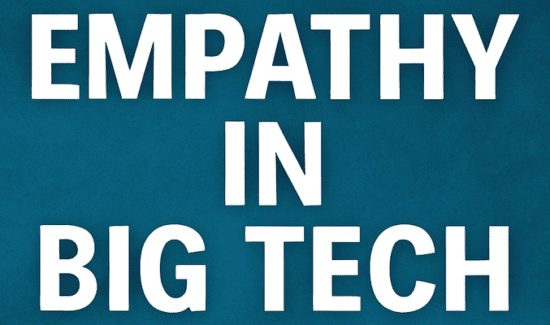Rethinking Readiness: Why Business-Technical Fluency Is the New Baseline for Talent

Linux Foundation’s Clyde Seepersad offers commentary on rethinking readiness and why business-technical fluency is the new baseline for talent. This article originally appeared in Insight Jam, an enterprise IT community that enables human conversation on AI.
For years, technical hiring relied on static checklists: a relevant degree, experience in a specific language, maybe a certification or two. Roles were narrowly defined. Career paths moved linearly. Expertise lived in silos. But in 2025, this approach is not just outdated, it’s actively impeding innovation.
The 2025 State of Tech Talent Report offers a clear message: organizations can no longer afford to separate business acumen from technical capability. The new baseline is hybrid fluency. It’s not enough to hire for a role; organizations must build for resilience. That means talent that moves fluidly between domains, navigates ambiguity, and bridges the gap between technology execution and business strategy.
This evolution is not theoretical. It’s structural.
The Demise of Rigid Roles
Traditional job ladders have collapsed under the pressure of AI, cloud-native architectures, and agile product delivery. These forces haven’t just reshaped tools, they’ve redefined the shape of work itself. The report finds that 67 percent of organizations have already seen significant changes to how their technical teams operate, from developers reviewing AI-generated code to the automation of entry-level tasks.
Yet this isn’t about job loss, it’s about role transformation. AI is expanding what’s possible, but that expansion demands a workforce capable of rethinking its own remit. Prompt engineers, AI governance specialists, cloud security architects aren’t lateral moves. They’re hybrid roles that combine deep technical literacy with judgment, systems thinking, and stakeholder communication. In short, the kind of fluency no credential alone can guarantee.
The Business Case for Hybrid Talent
The data underscore the business value of adaptability. Hiring and onboarding a new technical employee takes an average of 8.4 months. Upskilling an internal candidate? Just 5.2 months. That 38 percent time savings isn’t just operationally efficient, it’s strategically essential. Especially when nearly one in five new hires leave within six months, taking their onboarding investment with them.
Equally important is how organizations assess readiness. The report shows that 95 percent of hiring managers prioritize hands-on experience. Portfolios (85 percent) and certifications (71 percent) also carry weight, but degrees are increasingly seen as optional (65 percent). This signals a shift away from academic pedigree and toward demonstrable fluency, especially the kind built in real-world, cross-functional environments.
From Technical Skills to Transferable Insight
It’s not that technical depth is less important, it’s that it’s no longer sufficient on its own. In a world where 53 percent of organizations plan to expand their public cloud footprint and 94 percent expect AI to deliver value across core activities, companies need talent that can translate architectural decisions into business outcomes. The ability to connect engineering constraints to financial impact, user experience, or regulatory compliance is what makes a developer a strategist, or a platform engineer a business enabler.
That’s why organizations are investing heavily in talent transformation. The report finds they are 3.2x more likely to upskill current employees than hire externally. In areas like cloud computing, platform engineering, and cybersecurity, upskilling rates often exceed 60 percent. These are not tactical refreshes. They’re strategic reconfigurations that turn infrastructure teams into internal consultants, or compliance officers into automation architects.
Beyond Upskilling: Cultivating Strategic Versatility
True hybrid fluency goes beyond training. It requires organizational design that fosters mobility, mentorship, and mission alignment. Leaders must create space for T-shaped and Pi-shaped talent, individuals with both depth and range, capable of building bridges across teams and making judgment calls under uncertainty.
This is especially relevant as AI continues to reshape work. While 49 percent of organizations cite upskilling as their top strategy for implementing AI, 40 percent are also leveraging open source frameworks, underscoring the need for talent that can operate in transparent, community-driven environments. Hybrid professionals thrive here. They’re not just writing code; they’re contributing to ecosystems, building influence, and anticipating second-order effects.
In this context, culture is infrastructure. Organizations that embed open collaboration, continuous learning, and psychological safety don’t just retain more talent, they unlock more value. The report backs this up: 91 percent of organizations find technical training effective in reducing attrition, and 84 percent say open source culture supports retention and skill growth.
A Call for Strategic Recalibration
The implications are clear. Organizations must stop viewing technical hiring as a procurement process and start treating it as a design problem. They must build environments where business-technical fluency is cultivated, not assumed. That means:
- Rethinking job architectures to emphasize outcomes over roles
- Embedding upskilling pathways into daily workflows
- Supporting credentials that verify applied skills, not just knowledge
- Measuring readiness by adaptability, not tenure
We’re entering a talent market where versatility is the most valuable currency. The ability to pivot across disciplines, to speak both technical and strategic languages, to contribute in ambiguous and emergent spaces. That’s the new baseline.
The old playbook prized specialization. The new one demands integration. And the organizations that will lead are already rewriting the rules.
Download the 2025 State of Tech Talent Report – Truth vs. Vibe: The Not So Disruptive Workforce Impact of AI for free.







